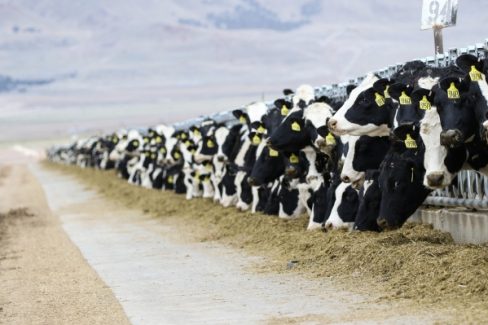For decades U.S. dairy farms have been getting bigger and that the number of farms has been declining, but the structural changes appear to be accelerating due to economies of scale, says Mary Ledman, dairy economist with the Daily Dairy Report
and president of Keough Ledman Associates Inc., Libertyville, Ill.
Not only are farms getting larger, but these structural changes have also reduced average production costs to the point that they have contributed to an expansion of U.S. dairy product exports, according to a recent study released by USDA’s Economic Research Service (ERS). The study, Changing Structure, Financial Risk, and Government Policy for the U.S. Dairy Industry, states that U.S. dairy producers face a new source of price risk due to elevated international exposure. ERS relied heavily on data collected by the National Agricultural Statistics Service’s Census of Agriculture report, which is completed every five years. The latest ag census data is from 2012.
“While is not news that dairy farms continue to get larger, the magnitude of growth might be surprising. The average number of milk cows per farm almost tripled from 1987 to 2012, from 50 cows to 144 cows,” says Ledman. “However, the real story lies behind the numbers. During that 25-year period, only farms with more than 500 cows increased in both cow numbers and production.”
Perhaps even more startling, according to Ledman, is that the midpoint, where half the cows are in larger herds and half the cows are in smaller herds, was 80 cows in 1987, while the mean, or average, was 50 cows. Over the next 25 years, however, the midpoint increased more than tenfold to 900 cows, while the mean only rose to 144 cows.
According to the report, in 1992 there were 135,000 dairy farms with less than 100 cows, and these farms held nearly half of the country’s 9.7 million milk cows. At that time, fewer than 1,700 operations milked more than 500 cows, and these farms accounted for less than 18 percent of all U.S. dairy herds, Ledman notes. Twenty years later, the number of dairy operations with fewer than 100 cows was just shy of 50,000, and these smaller farms held less than 18 percent of the country’s 9.2 million dairy cows.
“In stark contrast, the number of operations with more than 500 cows doubled to 3,344 farms, and now these farms account for 60 percent of the national dairy herd,” Ledman notes. “In fact, in 2012 nearly half of the U.S. dairy herd was on dairy operations with more than 1,000 cows, which is up from only 10 percent in 1992. Moreover these larger-scale dairy operations, historically located in the West, have spread across the United States.”
In 1992, the vast majority of milk cows in the Northeast, eastern Corn Belt, and Upper Midwest were on farms with fewer than 100 cows. In the Southwest and West, dairy farms with more than 500 cows held the majority of milk cows. “Twenty years later, nearly one-third of the dairy cows in traditional milk-producing regions are in herds with more than 500 cows,” says Ledman. “Lower costs are the key driver of this structural change.”
USDA estimates the average cost of milk production in the United States at $18.18/cwt. However, costs decrease dramatically as herd size gets larger. For herds with less than 50 cows the cost of production is $39.11, while the cost for herds with more than 2,000 cows drops to $13.80, according to the report.
“Cost differences within the largest-size herd categories illustrate the incentives large operations have to get even larger,” Ledman notes.
By: Fran Howard
Source: Milkbusiness.com




